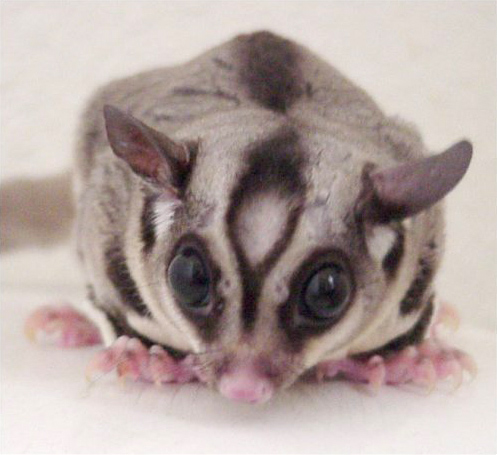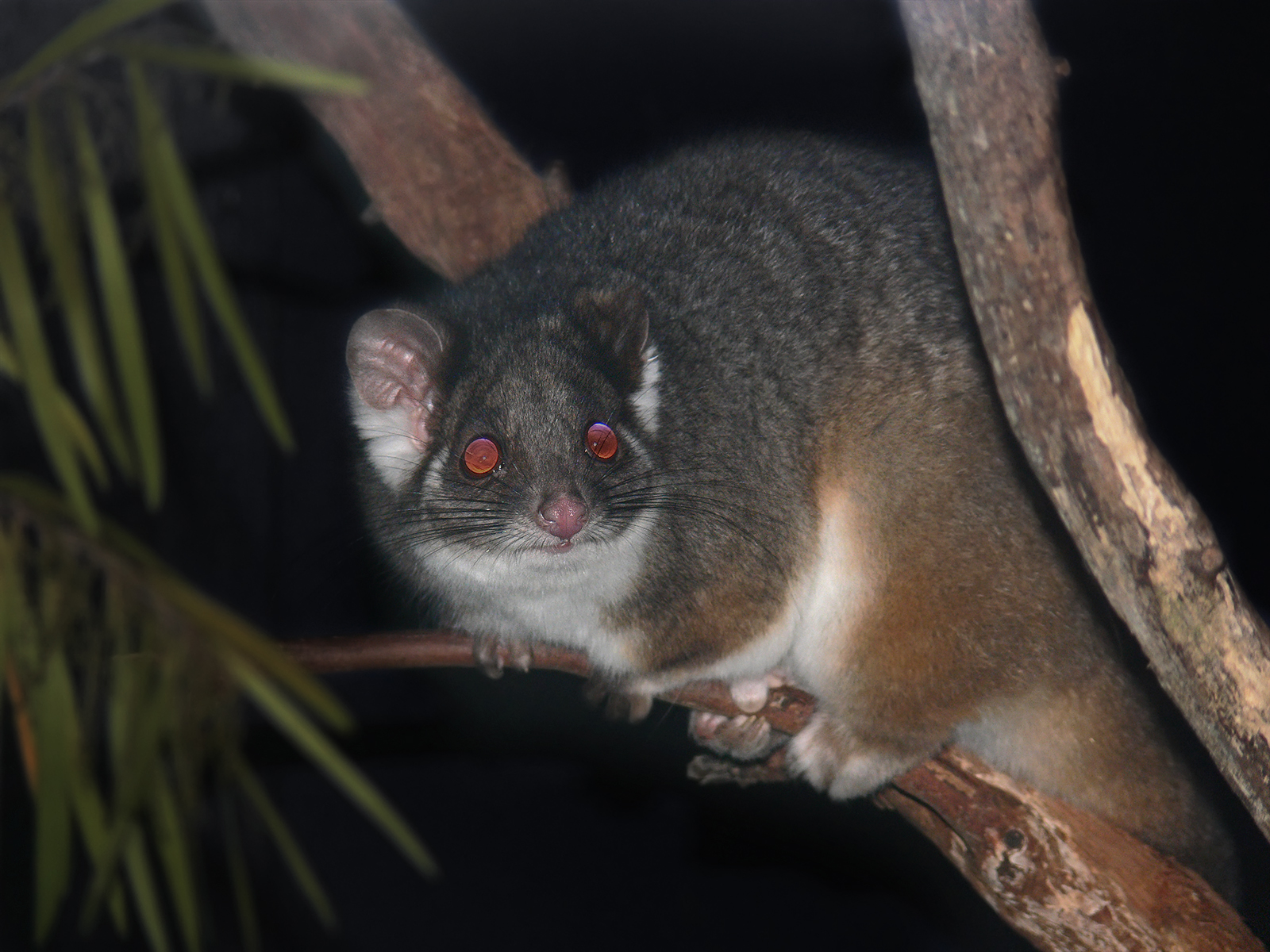|
Petauroidea
Petauroidea is a superfamily of marsupials from Australia and New Guinea. It is part of the suborder Phalangeriformes within the order Diprotodontia, which also includes, among others, wombats, kangaroos, cuscuses. The superfamily Phalangeroidea, including cuscuses and brushtail possums (family Phalangeridae) and pygmy possums (family Burramyidae), is the immediate sister group of the Petauroidea. The superfamily includes the following recent species: *Superfamily Petauroidea ** Family Pseudocheiridae *** Subfamily Hemibelideinae **** Genus '' Hemibelideus'' ***** Lemur-like ringtail possum, ''Hemibelideus lemuroides'' **** Genus ''Petauroides'' ***** Central greater glider, ''Petauroides armillatus'' ***** Northern greater glider, ''Petauroides minor'' ***** Southern greater glider, ''Petauroides volans'' *** Subfamily Pseudocheirinae **** Genus '' Petropseudes'' ***** Rock-haunting ringtail possum, ''Petropseudes dahli'' **** Genus ''Pseudocheirus'' ***** Common ringtail poss ... [...More Info...] [...Related Items...] OR: [Wikipedia] [Google] [Baidu] |
Diprotodontia
Diprotodontia (, from Greek language, Greek "two forward teeth") is the largest extant order (biology), order of marsupials, with about 155 species, including the kangaroos, Wallaby, wallabies, Phalangeriformes, possums, koala, wombats, and many others. Extinct diprotodonts include the hippopotamus-sized ''Diprotodon'', and ''Thylacoleo'', the so-called "marsupial lion". Characteristics Living diprotodonts are almost all herbivores, as were most of those that are now extinct. A few insectivore, insectivorous and omnivore, omnivorous diprotodonts are known, and the Potoridae are almost unique among vertebrates in being largely Fungivore, fungivorous, but these seem to have arisen as relatively recent adaptations from the mainstream herbivorous lifestyle. The extinct Thylacoleonidae, thylacoleonids ("marsupial lions") are the only known group to have exhibited Carnivore, carnivory on a large scale. Diprotodonts are restricted to Australasia. The earliest known fossils date to the ... [...More Info...] [...Related Items...] OR: [Wikipedia] [Google] [Baidu] |
Phalangeriformes
Phalangeriformes is a paraphyletic suborder of about 70 species of small to medium-sized arboreal marsupials native to Australia, New Guinea, and Sulawesi. The species are commonly known as possums, gliders, and cuscus. The common name "possum" for various Phalangeriformes species derives from the creatures' resemblance to the opossums of the Americas (the term comes from Powhatan language ''aposoum'' "white animal", from Proto-Algonquian *''wa·p-aʔɬemwa'' "white dog"). However, although opossums are also marsupials, Australasian possums are more closely related to other Australasian marsupials such as kangaroos. Phalangeriformes are quadrupedal diprotodont marsupials with long tails. The smallest species, indeed the smallest diprotodont marsupial, is the Tasmanian pygmy possum, with an adult head-body length of and a weight of . The largest are the two species of bear cuscus, which may exceed . Phalangeriformes species are typically nocturnal and at least partially arbo ... [...More Info...] [...Related Items...] OR: [Wikipedia] [Google] [Baidu] |
Petauridae
Petauridae is a family of possums containing 13 species: four species of trioks and striped possum (genus ''Dactylopsila''), eight species of wrist-winged glider (genus ''Petaurus''), and Leadbeater's possum (''Gymnobelideus leadbeateri''), which has only vestigial gliding membranes. Most of the wrist-winged gliders are native to Australia, whereas most of the striped possums to New Guinea, but some members of each group are found on both sides of the Torres Strait. Leadbeater's possum is endemic to Victoria, Australia. Evolution All petaurids have obvious facial markings, a well-defined dorsal stripe, very large lower front incisors, and four-cusped molars. Despite their distinctive appearance, petaurids are closely related to the ringtail possums (family Pseudocheiridae) and are grouped together with them to form the superfamily Petauroidea. The wrist-winged gliders are omnivorous, specialising on sap and nectar, but taking a wide variety of supplemental foods. The gliders a ... [...More Info...] [...Related Items...] OR: [Wikipedia] [Google] [Baidu] |
Tarsipedidae
The honey possum or noolbenger (''Tarsipes rostratus''), is a tiny species of marsupial that feeds on the nectar and pollen of a diverse range of flowering plants. Found in southwest Australia, it is an important pollinator for such plants as ''Banksia attenuata'', ''Banksia coccinea'' and ''Adenanthos cuneatus''. Taxonomy The first description of the diprotodont species was published by Paul Gervais and Jules Verreaux on 3 March 1842, referring to a specimen collected by Verreaux. The lectotype nominated for this species, held in the collection at National Museum of Natural History, France, was collected the Swan River Colony. A description of a second species ''Tarsipes spenserae'', published five days later by John Edward Gray and current until the 1970s, was thought to have been published earlier by T. S. Palmer in 1904 and displaced the usage of ''T. rostratus''. A review by Mahoney in 1984 again reduced ''T. spenserae'' to a synonym for the species, as was the emendation ... [...More Info...] [...Related Items...] OR: [Wikipedia] [Google] [Baidu] |
Petaurus Breviceps
The sugar glider (''Petaurus breviceps'') is a small, omnivorous, arboreal, and nocturnal gliding possum belonging to the marsupial infraclass. The common name refers to its predilection for sugary foods such as sap and nectar and its ability to glide through the air, much like a flying squirrel. They have very similar habits and appearance to the flying squirrel, despite not being closely related—an example of convergent evolution. The scientific name, ''Petaurus breviceps'', translates from Latin as "short-headed rope-dancer", a reference to their canopy acrobatics. The sugar glider is characterised by its pair of gliding membranes, known as patagia, which extend from its forelegs to its hindlegs. Gliding serves as an efficient means of reaching food and evading predators. The animal is covered in soft, pale grey to light brown fur which is countershaded, being lighter in colour on its underside. The sugar glider is native to a small portion of southeastern Austr ... [...More Info...] [...Related Items...] OR: [Wikipedia] [Google] [Baidu] |
Petauroides
The greater gliders are three species of large gliding marsupials in the genus ''Petauroides'', all of which are found in eastern Australia. Until 2020 they were considered to be one species, '' Petauroides volans''. In 2020 morphological and genetic differences, obtained using diversity arrays technology, showed there were three species subsumed under this one name. The two new species were named '' Petauroides armillatus'' and ''Petauroides minor''. These species are not closely related to the '' Petaurus'' group of gliding marsupials but instead to the lemur-like ringtail possum, ''Hemibelideus lemuroides'', with which it shares the subfamily Hemibelideinae. The greater gliders are nocturnal and are solitary herbivores feeding almost exclusively on ''Eucalyptus'' leaves and buds. Like their relative, the lemur-like ringtail, the southern greater glider is found in two forms: a sooty brown form and a grey-to-white form. The central greater glider is instead silvery brown, ... [...More Info...] [...Related Items...] OR: [Wikipedia] [Google] [Baidu] |
Central Greater Glider
The central greater glider (''Petauroides armillatus'') is a species of gliding marsupial native to the central coast of eastern Australia. Taxonomy It was initially described as a subspecies of '' Petauroides volans'', which alongside ''Petauroides minor'' formerly comprised a single species known simply as the greater glider. It was shortly after synonymized with ''P. v. minor''. However, in 2012 and 2015, several field guides written by Colin Groves and/or Stephen Jackson listed the greater glider as being split into 3 species, which was confirmed by a 2020 analysis, which found significant genetic and morphological differences between the three species. The American Society of Mammalogists now considers it a distinct species. There is some evidence of hybridization between this species and ''P. minor'' near the northern edge of its range. Distribution Although Jackson and Groves listed the species as ranging from just north of Townsville south to the Eungella Range, ge ... [...More Info...] [...Related Items...] OR: [Wikipedia] [Google] [Baidu] |
Northern Greater Glider
The northern greater glider (''Petauroides minor'') is a species of gliding marsupial endemic to the forests of north-central Queensland, Australia. Taxonomy It was initially described as a subspecies of '' Petauroides volans'', which alongside '' Petauroides armillatus'' formerly comprised a single species known simply as the greater glider. ''P. v. armillatus'' was also eventually considered conspecific with ''P. v. minor''. However, in 2012 and 2015, several field guides written by Colin Groves and/or Stephen Jackson listed the greater glider as being split into 3 species, which was confirmed by a 2020 analysis, which found significant genetic and morphological differences between the three species. The American Society of Mammalogists now considers it a distinct species. There is some evidence of hybridization between this species and ''P. armillatus'' near the southern edge of its range. Distribution It is the northernmost species of ''Petauroides''. This species range ... [...More Info...] [...Related Items...] OR: [Wikipedia] [Google] [Baidu] |
Petauroides Volans
The southern greater glider (''Petauroides volans''), also known as the southern and central greater glider, is a species of large gliding marsupial native to the forests of southeastern Australia. It is a vulnerable species per the IUCN Red List classification, but since 5 July 2022 is listed as endangered under the EPBC Act in Australia. The main threats to its survival are climate change and logging. Taxonomy This was the first described species of ''Petauroides'', and long thought to be the only species, with '' Petauroides armillatus'' and ''Petauroides minor'' being thought to comprise a distinct subspecies of it, ''P. volans minor''; together, they were referred to as the greater glider. However, in 2012 and 2015, several field guides written by Colin Groves and/or Stephen Jackson listed the greater glider as being split into three species, confirmed by a 2020 analysis which found significant genetic and morphological differences between the three species. The American ... [...More Info...] [...Related Items...] OR: [Wikipedia] [Google] [Baidu] |
Pseudocheirinae
Pseudocheiridae is a family of arboreal marsupials containing 17 extant species of ringtailed possums and close relatives. They are found in forested areas and shrublands throughout Australia and New Guinea. Characteristics Physically, they appear very similar to the pygmy possums, except for their greater size. Even so, they are relatively small animals, with the largest being cat-sized, and they weigh between 200 grams and 2 kilograms. They have grasping hands and feet with opposable first toes on their hindfeet, and, in all species save the greater glider, a prehensile tail. They are nocturnal, with large eyes. All species feed almost entirely on leaves. To enable them to digest this tough and fibrous food, they have an enlarged cecum containing fermenting bacteria, and, like rabbits, they are coprophagous, passing food through their digestive tracts twice. Their teeth include a battery of grinding molars, and they lack lower canines. Their dental formula is: Mos ... [...More Info...] [...Related Items...] OR: [Wikipedia] [Google] [Baidu] |





